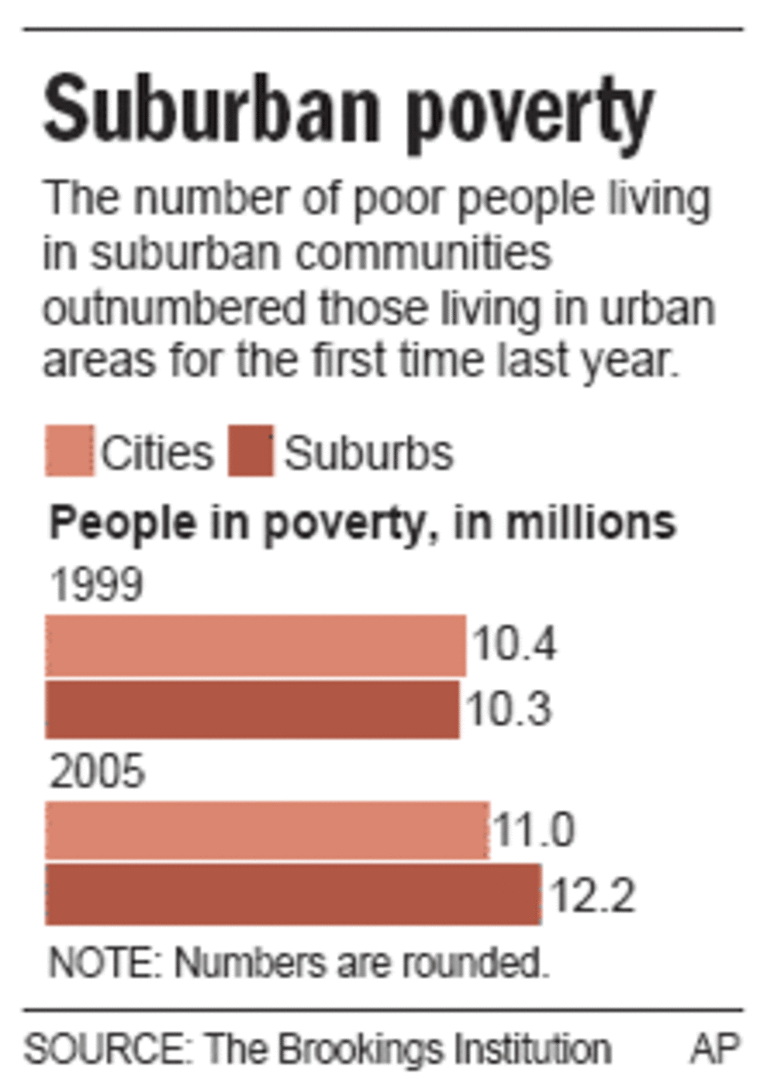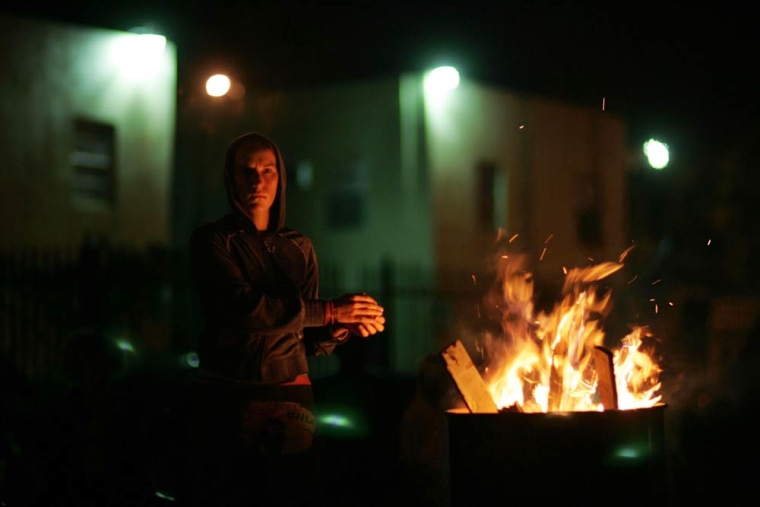As Americans flee the cities for the suburbs, many are failing to leave poverty behind.
The suburban poor outnumbered their inner-city counterparts for the first time last year, with more than 12 million suburban residents living in poverty, according to a study of the nation’s 100 largest metropolitan areas released Thursday.
“Economies are regional now,” said Alan Berube, who co-wrote the report for the Brookings Institution, a Washington think tank. “Where you see increases in city poverty, in almost every metropolitan area, you also see increases in suburban poverty.”
Nationally, the poverty rate leveled off last year at 12.6 percent after increasing every year since the decade began. It was a period when the country went through a recession and an uneven recovery that is still sputtering in parts of the Northeast and Midwest.
“Looking back at the 1970s, you would have seen cities suffering and suburbs staying the same,” said Berube, research director at the Brookings Institution’s Metropolitan Policy Program. “But the story is different today.”
Berube said several factors are contributing to an increase in suburban poverty:

Berube and research analyst Elizabeth Kneebone studied poverty figures for the 100 largest metropolitan areas, measuring changes from 1999 to 2005, the most recent data available.
In 1999, the number of poor people living in cities and suburbs was roughly even, at about 10.3 million apiece, according to the report. Last year, the suburban poor outnumbered their urban counterparts by about 1.2 million.
“Traditionally, cities have been viewed as home to poor populations, surrounded by middle- and upper-income suburbs,” the report said. “This ’tipping’ of poor populations to the suburbs represents a signal development that upends historical notions about who lives in cities and suburbs.”
Marc H. Morial, president and CEO of the National Urban League, said many of the same social and economic problems that have plagued cities for years are now affecting suburbs: struggling schools, rising crime and low-paying jobs.
“I call it the urbanization of the suburbs,” Morial said.
“I hope this says to people that the way to confront poverty is not to wall it off and concentrate it,” Morial said. “You really need policies to eliminate it.”
Cleveland was the city with the highest poverty rate last year, at 32.4 percent, while San Jose had the lowest, at 9.7 percent.
Suburban McAllen, Texas, at the southern tip of the state, was the suburb with the highest poverty rate last year, at 43.9 percent, while suburban Des Moines, Iowa, had the lowest, at 3.7 percent.
